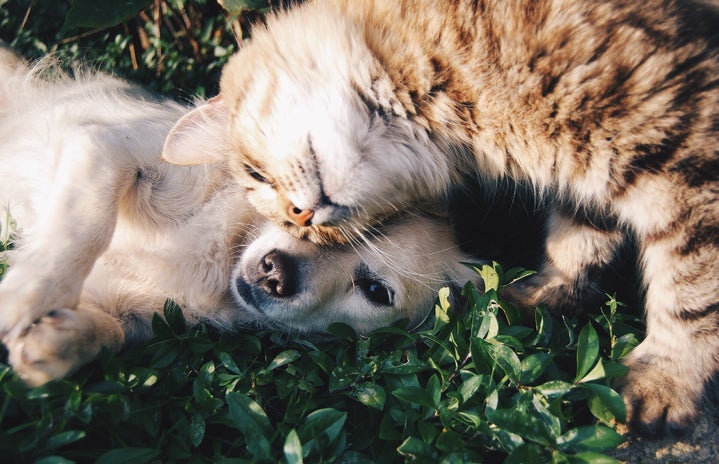In my experience working in Columbia animal shelters, fostering, and adopting my own furbaby right here in Soda City, I have picked up a few tips and tricks along the way. Finding your next perfect companion begins with you. Yes, YOU. Understanding your routine, availability, energy level, available space etc. is step one to finding a good match. In my experience, people are normally attracted to the cute little puppies and kittens but don’t have the resources or time to care for and teach them properly. Or they want a shepherd mix but don’t have an active lifestyle to accommodate their high energy.
Prioritize Personality
As I said, it is important to consider personality, age, size and disposition when looking at rescue animals to adopt. Animals might not always appear in the shelter the same way they would act in a home environment. When adopting my cat here in Columbia, I was looking for a young adult cat who was cuddly and full of personality — but in the shelter, she didn’t outwardly appear to fill those criteria. When I met her, she was hiding in a box with another cat and didn’t want to come out to play. However, another tip is to talk to staff and volunteers about the animal you’re interested in. If the animal has been in foster care, you can get a better idea of how they act in a home environment and when they are more confident around the people they’re familiar with. This was the case with my cat. Although she appeared shy and skittish in the initial meeting, her foster family talked about how cuddly and fun she was, so I knew she was the right fit for me.
Budget Properly
Another factor to consider when adopting is money — and it doesn’t end at the adoption fee. A lot of times college is the first time we’re having to budget for ourselves, and it’s important to understand that pet costs add up quickly. From pet deposits at apartment complexes or rental houses to supplies to vet bills, the cost of your furry friend can get high. Even general costs such as food, litter, treats, toys, etc. can add up quicker than you would think. One advantage of adopting from a rescue is that it cuts cost — only minimally. The adoption fee might be lower than a purebred animal and, in general, mixed-breed animals have fewer health issues, which attracts college students into thinking it’s a cheap alternative to a purebred pet. Something essential to consider though is that the lifetime expense of having a furbaby is high and, whether you’re rescuing it or not, could be higher than you expect or can afford.
Location, Location, location!
You should also consider where to adopt from. There are pros and cons to adopting from a municipal shelter like Columbia Animal Services versus a private nonprofit rescue like ARC or Pawmetto Lifeline. A lesser-known fact of working in a municipal shelter is that county shelters cannot refuse any animal that comes through their doors — whether they have room or not. When these shelters fill up, they have to make tough decisions, which gives them a bad rap. They are a cheaper alternative to a private rescue, though, if you’re looking to save a few bucks. The only real downside of adopting from a county shelter is that they usually are taking in strays that don’t have a lot of information or history known about them.
If you are prepared to put in the time, effort and money, rescuing your next pet in Columbia will be an extremely rewarding experience. There are so many wonderful animals in Columbia from so many backgrounds that just end up in the wrong place at the wrong time, so you can’t go wrong with whichever one you feel a connection to — whether they’re from Columbia Animal Services or local private rescue!



